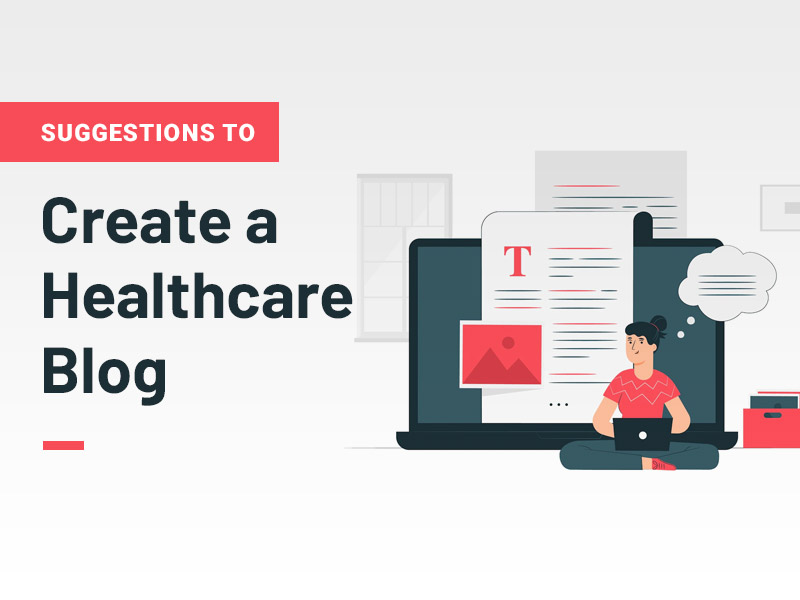Starting a healthcare blog can be a rewarding and educational experience. A well-written and informative healthcare blog can serve as a valuable resource. Especially for those seeking information on a wide range of medical topics. From treatment options and preventative measures to coping with chronic conditions and managing overall health and wellness there is a wealth of information worth sharing.
But how can you ensure that your blog is engaging, informative, and successful? This post will provide seven practical suggestions for building a fantastic healthcare blog. We’ll also cover how to engage with your audience.
We will explore how you can promote your blog and regularly update your content to keep readers coming back. So, if you’re ready to share your knowledge and insights on health care with the world, read on for some valuable guidance.
Suggestions to Create a Fantastic Health Care Blog
1. Identify Your Target Audience
Uncovering your most pertinent demographic is the foundation for evolving an amazing healthcare blog. For whom are you formulating? Are you directing your content to potential patients, experienced medical professionals, or a conglomeration of both? Examining your readers will assist you in adjusting your posts to meet their objectives and attract their interests.
If focused on individuals, create content that is more elementary and straightforward. Inversely, targeting medical experts may call for more detailed and professional posts. Optimally, by recognizing who will be reading the material, you can insure that the information contained is up-to-date, meaningful, and exciting for the intended audience.
2. Research Your Topics Thoroughly
When writing about health care, it’s essential to be accurate and up-to-date. Make sure to research your topics thoroughly. If you have any concerns, think about speaking with medical experts. This can help ensure that your content is reliable and informative.
Additionally, it’s essential to be aware of HIPAA privacy rules. It protects the privacy of an individual’s health information. If you’re writing about specific cases or individuals, obtain their permission. Ensure that any personal information is protected following HIPAA rules.
HIPAA privacy rules also require that covered entities, such as healthcare providers and insurers, have appropriate safeguards. It is vital to protect the confidentiality, integrity, and availability of electronically protected health information (ePHI).
If you’re handling ePHI in your blog, it’s vital to ensure that you comply with HIPAA requirements. This will help establish your credibility and ensure that your readers can trust the information you provide.
3. Choose a Niche
Another essential step in creating a fantastic healthcare blog is to choose a niche. At the same time, it’s possible to write about a wide range of healthcare topics. It may be more effective to focus on a specific area of interest. This will help you establish yourself as an expert in your field and attract a dedicated audience.
For example, you could focus on a specific condition or treatment. You can also focus on a particular aspect of health care, such as nutrition or mental health. By choosing a niche, you can ensure that your content is focused and relevant.
You’ll be able to build a reputation as an authority on your chosen topic. Additionally, focusing on a specific area of interest can help attract readers interested in that particular topic. It can help you build a loyal and engaged audience.

Source: Freepik
4. Make it Understandable
While you want to provide valuable information, making sure your content is easy for your audience to understand is essential. Use precise language and use images or videos to help illustrate your points. This can help make your content more engaging and accessible, especially if you’re writing about complex or technical topics.
Additionally, consider breaking up your content into manageable chunks. Use headings, subheadings, and bullet points or numbered lists to help organize your ideas. These strategies can help make your content more visually appealing and easier to read. It will ensure that your readers can benefit from the information you provide fully.
5. Include Links to Reputable Sources
Include links to reputable sources that can help establish your credibility. It will give your readers more information on the topics you’re discussing. Additionally, it might raise your search engine ranking. Search engines often consider the quality and relevance of the sources linked to a website or blog.
When including links in your blog posts, choose reputable sources relevant to your topic and provide valuable information. This can help ensure that your readers are getting accurate and reliable information. It can also help establish your blog as a trusted resource.
Consider adding a “Resources” or “Further Reading” section to your blog post. You can list additional sources for readers who want to learn more about the topic you’re discussing.

Source: Freepik
6. Engage with Your Audience
Enhance reader interaction by requesting comments and suggestions. Consider featuring guest posts from healthcare professionals or patients. This will help build community and make your blog more interactive. Engaging with your readers can also help you get valuable insights and ideas for future blog posts. It can help build a loyal and dedicated audience.
Additionally, consider responding to comments and questions. This can help show your readers that you value their input. Also, you are committed to providing a helpful and informative resource. By engaging with your audience, you can create a sense of community and build a loyal following for your blog.
7. Promote Your Content
For your blog to be successful, you’ll need to attract readers. Advertising your content is one way to accomplish this. Think about posting links to your blog content on social networking websites. You can share on Facebook, Twitter, and LinkedIn, as well as any relevant forums or discussion groups.
You can also promote your blog by guest posting on other websites or blogs. Another way is to reach out to healthcare professionals or other experts in your field and ask them to share your content. Additionally, consider optimizing your blog for search engines using relevant keywords and tags.
Final Thoughts
Creating a fantastic healthcare blog doesn’t have to be overly complicated. Focusing on the areas of engagement, education, and motivation will help you ensure your blog is something substantial that resonates with readers and achieves the desired results.
From identifying your target audience and choosing a niche to researching your topics thoroughly, and using clear and engaging language, these tips will help you create a blog that is both informative and accessible.
Being creative, consistent, and passionate will lend your blog the type of authority which stands out in the health-jarring cacophony of other similar online content. Start writing today and make yours the blog everyone else is trying to emulate!







